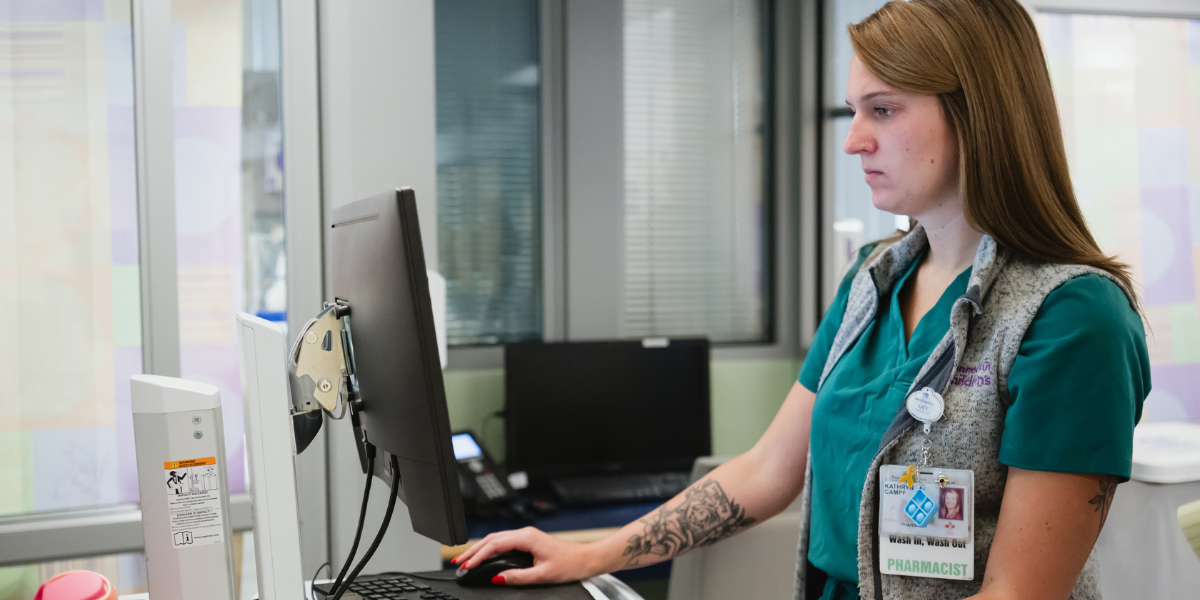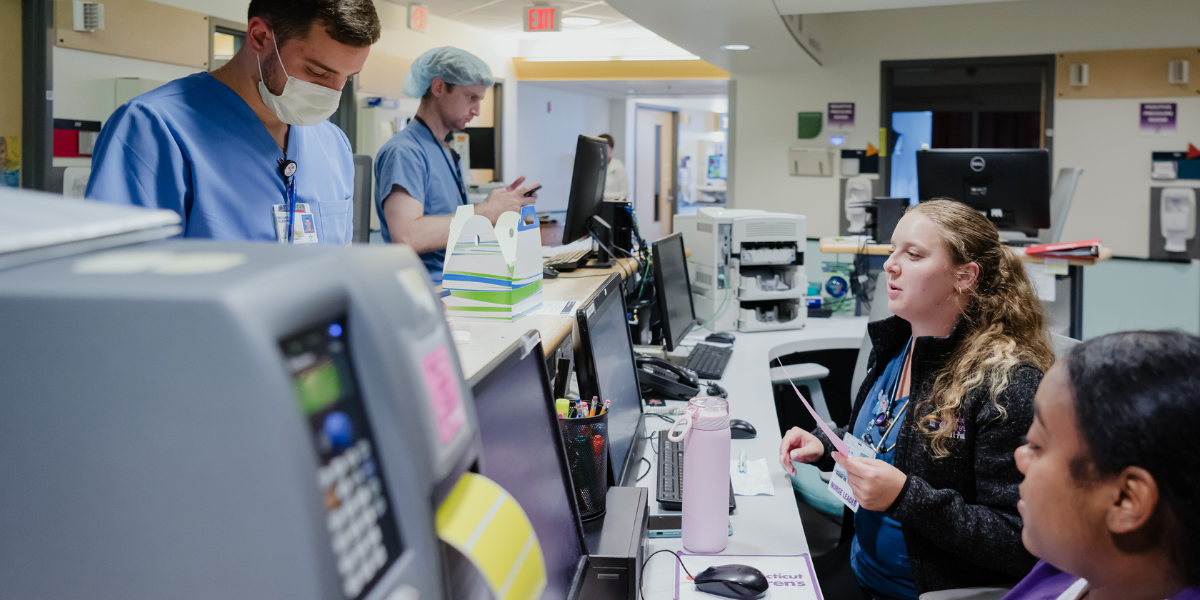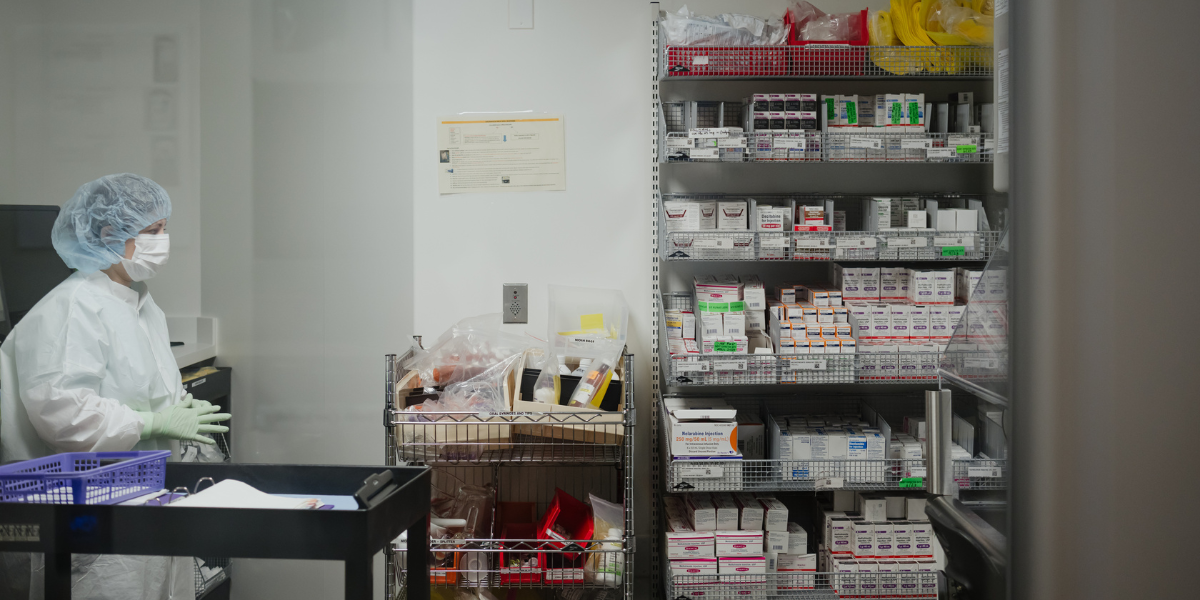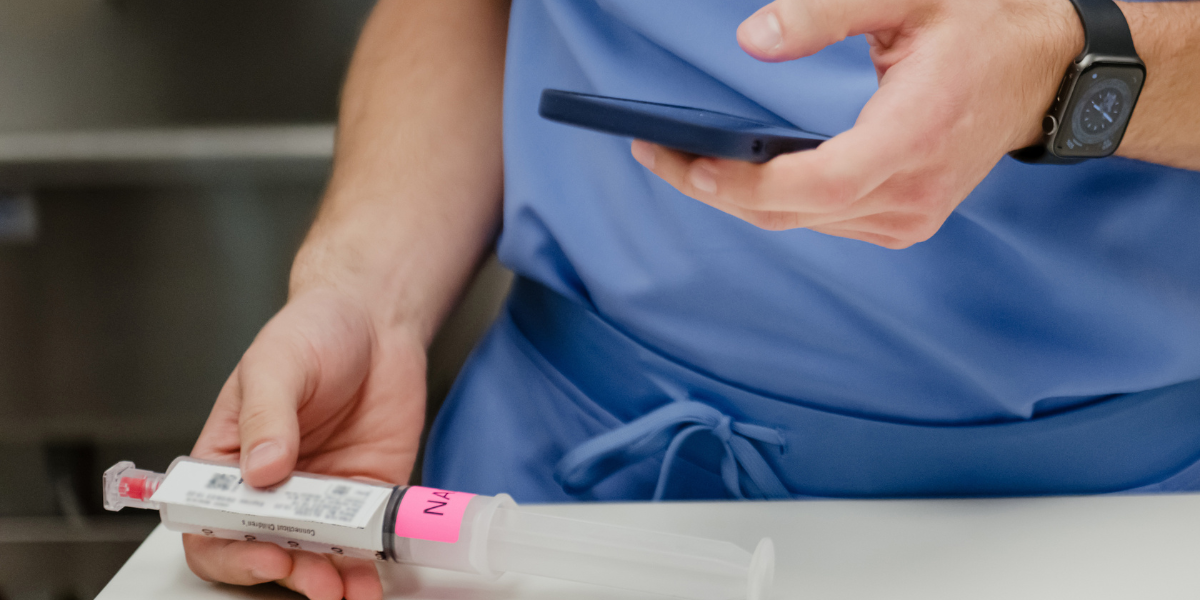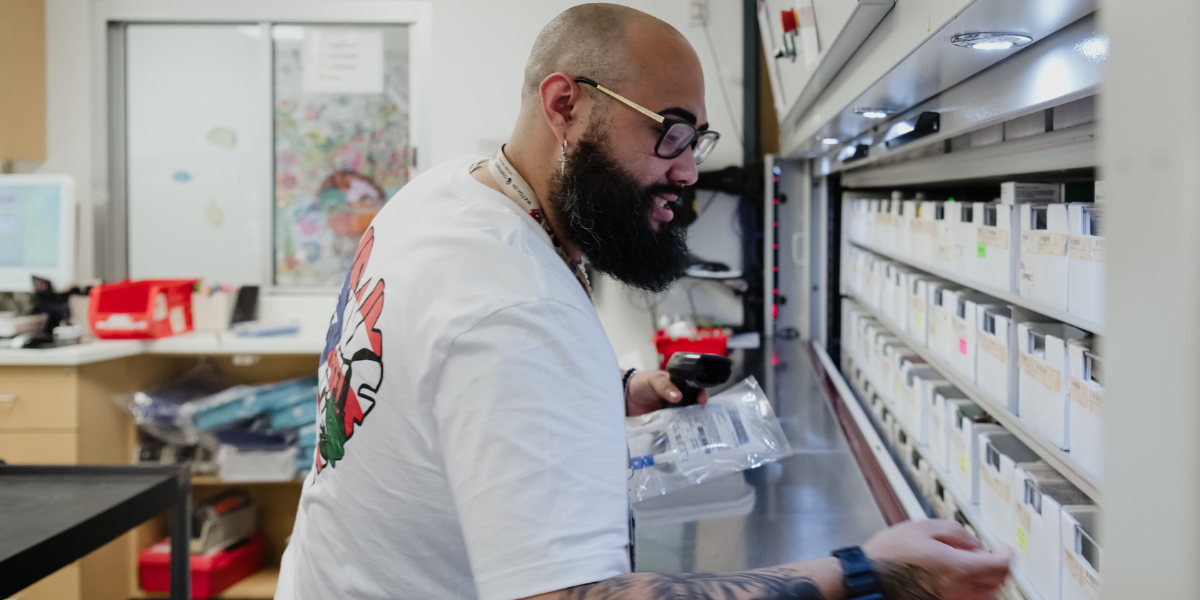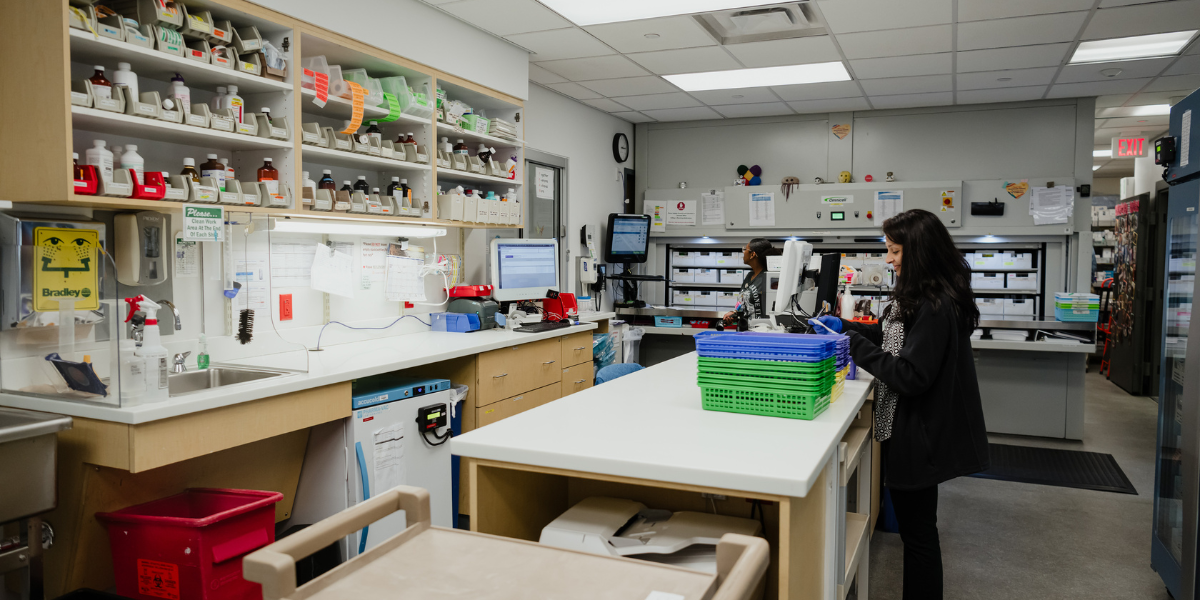8:35 am
Clinical Pharmacist II Katy Campf is on morning rounds in the pediatric intensive care unit (PICU). The care team visits each patient room, meeting in the hallway just outside to review the patient’s condition and care. They stop at the room of a 7-month-old who is waiting for a bed to become available at a transitional care facility, where he will stay until his tracheostomy tube can be removed. He’s on both cardiac and pain medication.
Part of Katy’s job is to monitor the weight of infants. Because they grow so quickly, even a small increase in weight can necessitate a change in medication dosage. From her WOW (a computer Workstation on Wheels), she can access the hospital’s EPIC records system to see the baby’s medical chart. The care team is monitoring his electrolytes and urine output, but he is otherwise stable and needs no change to his medications today.
Latest Articles

$1 Million Gift from Big Y Supports Connecticut Children's New Clinical Tower and Expanded Pediatric Services

A New Era of Care Begins: Connecticut Children’s Celebrates the Opening of the New Clinical Tower

